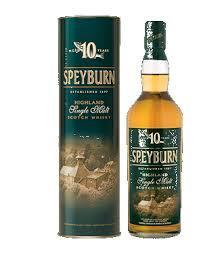Reviews of Shiloh Legend II 2010 and several Speyburn Single Malt Scotch Whiskies.
By Joshua E. London and Lou Marmon
Washington Jewish Week October 23, 2014

But change may be coming. An Israeli archeologist/oenophile, Elyashiv Drori, is determined to discover some of Israel’s lost viticultural heritage. At an archeological dig near Jerusalem’s Old City, roughly a kilo of grapes from nearly 3,000 years ago was discovered, preserved under layers of earth. Drori and his team are utilizing modern technology (including DNA sequencing) to determine if there are any of these ancient grapes still growing in the region.
They have previously identified nearly 100 unique types of indigenous grapes growing wild in Israel, with at least 10 of these considered appropriate for winemaking. If the testing correlates a wild grape with their specimens, Drori hopes that Israeli winemakers will reclaim their heritage and create modern versions of the wines enjoyed by King David.
Given the changes in taste over the centuries, we remain skeptical that wine producers and grape growers would switch en masse from commercially successful production to grape varietals entirely unknown to modern consumers, but we commend Drori for his optimism. We wish him luck, and eagerly await the fruits of his efforts.
Until then, we will enjoy a glass from one of Israel’s more modern wineries with historic roots. Established in 2005 the Shiloh Winery’s connections to winemaking actually go back thousands of years as evidenced by the ancient winepresses found in the nearby Samarian (Shomron) hills.
Their excellent Shiloh Legend II 2010 is a rich, hefty yet elegant, full-bodied, fresh, balanced blend of 70 percent Cabernet Sauvignon, 25 percent Carignan and 5 percent Sangiovese, exhibiting aromas and flavors of black fruits, tobacco, eucalyptus and lovely spices, all structured with enough acidity and smooth tannins to provide a little longevity. A marvelous masterpiece, and mevushal too!
Spirits-wise, we recently tasted an old and expensive single-malt Scotch whisky from the otherwise value-driven Speyburn Distillery and thought it merited comment. We’ve reviewed some Speyburn whiskies before, but never their expensive, high-end release – though for no other reason than we hadn’t gotten around to tasting it yet.
Speyburn is located in Scotland’s famed Speyside region. More of a subregion within the Scottish Highlands, Speyside, in Morayshire, is geographically fairly small. Yet most working distilleries in Scotland are located there, including worldwide best sellers like The Glenlivet, Glenfiddich, Balvenie, Glen Grant, and The Macallan.Within Speyside, Speyburn is beautifully nestled just outside of Rothes, in the heart of Moray. This is one of five distilleries in Moray – the others are Glen Grant, Glen Spey, the mothballed Caperdonich and the Glenrothes.
Speyburn was founded in 1897 and changed ownership a number of times over the years, eventually coming into the Inver House Distillers Limited portfolio in 1991. Inver House is wholly owned by International Beverage Holdings Limited, the international arm of Thai Beverages Plc, one of the largest alcoholic-beverage companies in Southeast Asia.
As part of it market-strategy, Inver House has been reinvesting back into its various distilleries, revamping and relaunching its single malts. Since then, Speyburn was launched as a 10-year-old whisky aimed at the “value” or low end of the market.
Speyburn currently produces just three whiskies, two are budget driven and the third is budget busting. Here are our thoughts:
Speyburn 10 year old, Single Highland Malt, Scotch Whisky (43 percent abv; $30): This lovely, light, limpid gold-colored whisky, with very subtle amber highlights, offers floral, grassy, fruity, vanilla, caramel, citrus and slightly nutty aromatic notes, with a whiff of cereal grain and possibly even smoke. On the palate, this light- to medium-bodied whisky is sweet and gentle, with pleasing, at times elegant, notes of citrus fruits, green apples, herbs and nuts,ending in a most pleasing, lengthy, and interesting malted barley dominant finish. Very nice malt indeed!
Speyburn Bradan Orach, Single Highland Malt, Scotch Whisky (40 percent abv; $20): Bradan Orach is a pale golden colored whisky, matured exclusively in ex-bourbon casks, exhibiting malty and fruity aromatic notes – the first whiff of which was a tad sour and off-putting, but after nearly a minute in the glass opened up really nicely with additional notes of citrus fruit, honey, vanilla and cream. The cream and citrus continue to develop very pleasantly in the glass. Initially much weaker on the palate, but gentle and warming, opening with just a little passing time, to reveal more of that creamy vanilla and fruity, grain-centered core, with hints of spice and oak. Nicely balanced and, again, with a pleasing, lengthy finish.
Speyburn 25 Year Old, Single Highland Malt, Scotch Whisky (46 percent abv; $315): matured in both American White Oak ex-Fino sherry casks and ex-bourbon casks, this opens sweet, floral and pleasant, with aromatic notes of vanilla, toasted oak, a little spice, honey and a little lemon zest zing in the background (water brings this element forward), followed by lovely textured flavors on the palate of vanilla fudge, graham cracker, allspice, honey, marzipan, walnuts, more citrusy notes (including candied orange peel and sweet nectarine) custard, and all ending towards a lovely, long, dry lemony finish with hints of dusty cocoa flashing in and out of focus. Overall creamy, very smooth, complex, and yummy. L’Chaim!
